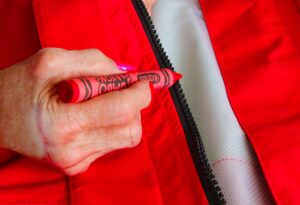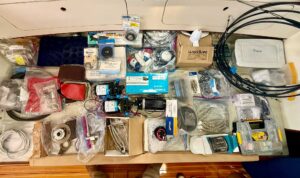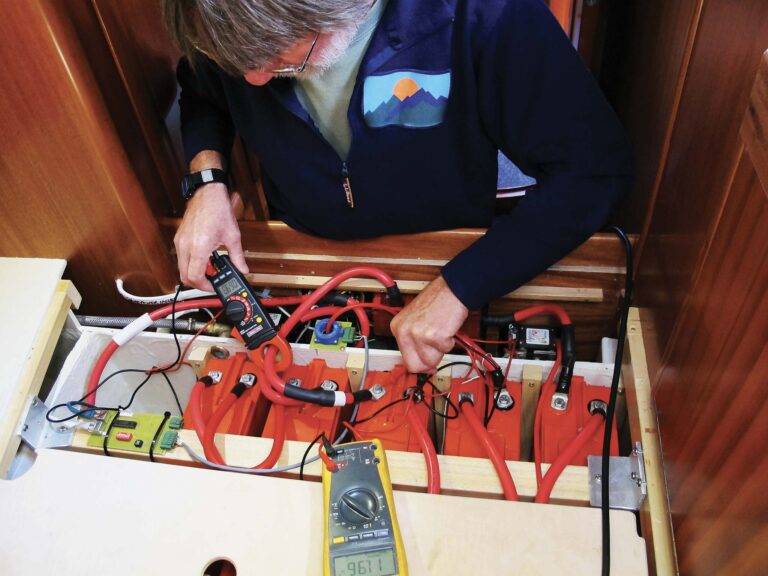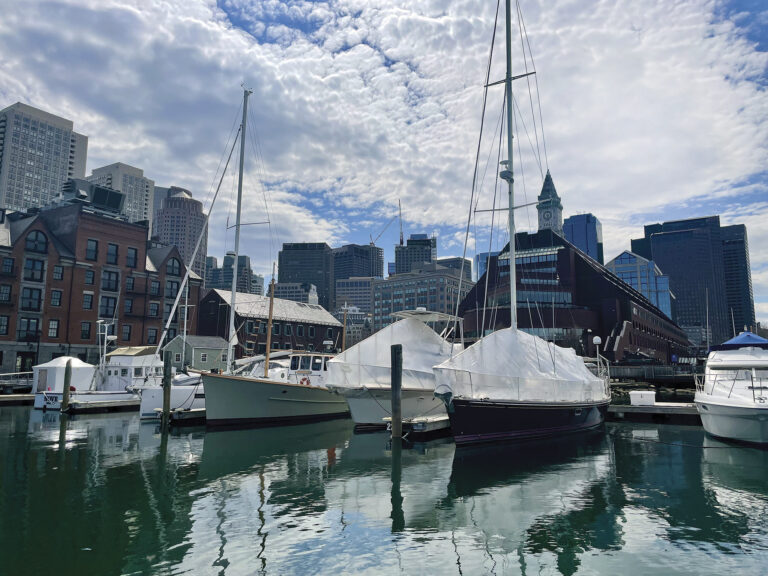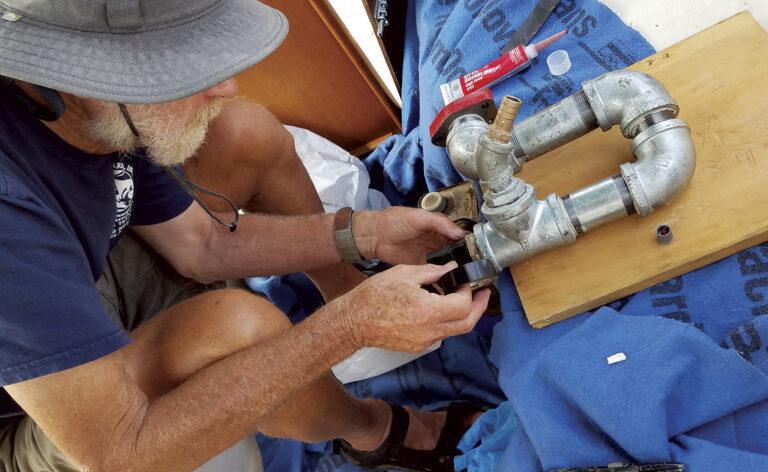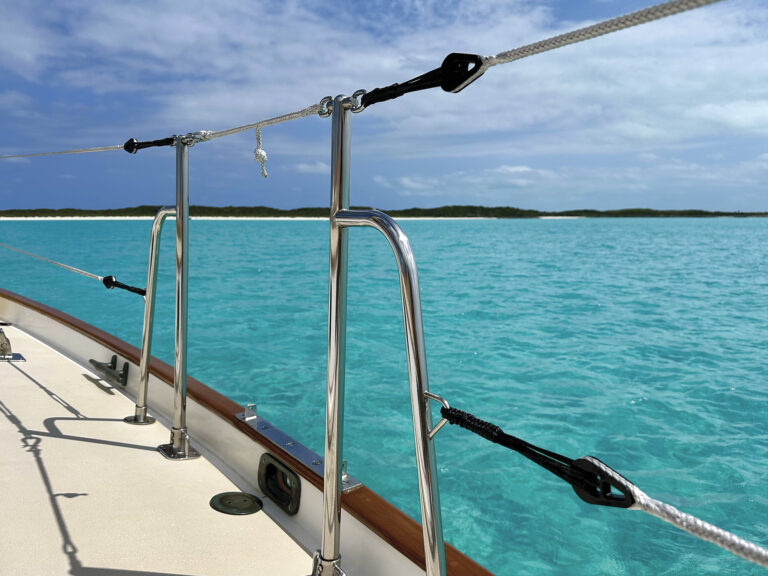The chances are that unless you have a small daysailer or dinghy that spends most of its time out of the water, your boat will have some form of antifouling paint below the waterline. Antifouling paint is poisonous to marine life and prevents it, as much as possible, from adhering to the bottom while the boat is in the water. Sailors early on recognized the importance of keeping the bottom of their craft free of fouling as a hull covered with barnacles and weeds loses significantly in terms of speed and performance. To deter marine growth, they nailed sheets of copper (poisonous to marine life) to the under sections of their boats.
It’s certainly more convenient to apply a paint offering similar properties to those of the copper sheets. In fact, most antifouling paints contain large amounts of copper in the form of cuprous oxide, which repels marine growth and is held in a binder to make it into a paint that can be applied to the boat. The rising cost of copper is one reason why antifouling paint is so expensive.
Unlike the copper sheets of old, antifouling paint often needs to be reapplied every year—sometimes less often, depending on where the boat is sailed and whether it is left in the water all season.
Which type?
It’s a good idea to think in terms of the type of paint you need before getting mired down in cost and manufacturers. There is a confusing variety to choose from—ablative/self-polishing, traditional, hard modified epoxies, vinyl, thin film, and a number of specialized varieties, each targeted at a specific application.
Ablatives/self-polishing
Ablative paints are formulated to wear away exposing fresh biocide, usually copper, as the boat moves through the water. They depend on water washing away the paint surface, so they are not a good choice for a boat that stays at the dock or on a mooring for extended periods of time. Because the rate of wear varies with the water flow, extra coats are needed on leading edges that see higher velocities.
Copolymer ablatives can provide multi-season protection. Their antifouling properties are not degraded by drying out, and these paints are recommended for trailersailers. It is desirable to have the first coat of antifouling of a different color than subsequent ones to serve as a flag coat. When the flag coat begins to show, it’s definitely time to repaint. Because the paint film wears away over time, minimal prep work is required before repainting.
Ablatives are produced by all major bottom-paint manufacturers. At least one manufacturer has a copolymer paint that does not rely on the boat’s movement to release fresh biocide, but it is sold for professional use only.
Traditional soft/sloughing
Older formulations are based on rosin or rosin/resin blends; they vary from soft to semi-hard and are in general the lowest-cost antifouling paints. The softer of these don’t stand up to abrasion and are sometimes referred to as “sloughing,” although their primary action is the result of the biocide, almost always cuprous oxide, leaching out of the paint. These single-season paints are an economical choice for cruising boats that are hauled for the winter.
Hard modified epoxies
Based on epoxy resins, these are hard one-part paints that in some cases can be burnished. Their effectiveness and cost vary with the percentage of bio-cide (usually cuprous oxide without additives). They are the most likely to be compatible for overcoating other types of antifouling, other than those that are soft or contain low-friction components like Teflon. They require launching within 24 hours or less (varies from paint to paint) after the final coat. While they lose effectiveness when out of the water for extended periods, this does not happen immediately, so haulouts are practical. They work by releasing the biocide from the paint over the course of the season, so the effectiveness drops as the biocide needs to come from deeper within the paint. This can be offset to some extent with periodic scrubbing. Because the paint film does not wear away, it must be removed from time to time to avoid excessive buildup.
Vinyls
The hardest of antifouling paints, they are often used on racing boats as they can be wet-sanded and burnished to a polished surface. Because their strong solvents are capable of attacking other paints, all other types of antifouling must be removed before vinyls are applied, since tie coats are not a viable solution. Vinyls also must be launched soon after application.
Thin film
These paints are described as low-drag/high-performance paints, suitable for freshwater use, which incorporate low-friction components like Teflon in addition to copper-based and chemical biocides. One such paint is stated to dry within 2 to 6 minutes and require launching within 10 to 30 minutes.
Specialized antifouling paints
- Aluminum safe: These employ copper thiocyanate in lieu of cuprous oxide to avoid galvanic attack on aluminum hulls and other underwater components. Often available in spray cans for use on the lower ends of saildrives.
- Boottop: Hard scrubbable antifouling also using copper thiocyanate, but compatible with bright colored pigments instead of the dull muted colors of paints using cuprous oxide.
- Transducer: Usually sold in spray cans, these antifoulings are formulated to not degrade electronic performance. They may have zinc as a biocide.
- Inflatable: Flexible antifouling formulated to bond to nonrigid coated fabrics.
How do you choose?
Choosing your antifoulings requires making several decisions: What type is your existing antifouling, and how much maintenance do you want to do? Is your boat a trailersailer, or will it remain in the water for an extended period of time? Is the water salt or fresh? How important is speed, long life, or both? Since the severity of fouling can vary significantly from area to area, it’s useful to consult with other sailors in the area, with local boatyards, and/or with the guys behind the counter at the local boat store.
Don’t buy on price alone; a cheap antifouling may not give you the protection that you need and might cause headaches later in terms of additional stripping and preparation time before applying the next coats. Most of the major marine-paint manufacturers have Web sites and telephone help lines; they can be an invaluable source of help, particularly with respect to what types of antifouling can be used to overcoat other types. In some cases, either a special primer coat or complete removal is required.
Getting the old stuff off
Removing years of old antifouling can be a real chore. Bear in mind that the antifouling is toxic to humans too, so make sure to wear a proper respirator and a full body suit. Use a chemical stripper; they’re expensive but will save you lots of time. Wet-sanding is another possibility, but it’s messy and may be illegal in your area because of the toxic waste.
Use 80-grit wet-and-dry paper (drywall sanding mesh works well, too), and use plenty of water from a hose. In most cases, it is not essential to remove every last scrap of the old stuff, but you do need a smooth surface to apply the new paint to. Now is also a good time to repair any dings in the hull surface.
You should dry-sand antifouling only if you have a sander that is intended for the purpose and connected to a vacuum cleaner. The dust is poisonous and very invasive, and you will coat everything within a 50-yard radius—more if it’s windy. Also, the health risks of breathing the dust cannot be over emphasized; do everything you can to keep dust under control.
Application
It should go without saying that when applying any paint, you should follow the manufacturer’s recommendation to the letter. Read the label carefully; the paint is expensive, and application on a poor undersurface will cause the paint to underperform or, worse, fall off. I’m the first to admit that on several occasions I thought I knew better than the makers and ended up getting a sloppy finish.Applying antifouling paint is more straightforward than applying topside paint, but you must be careful to adhere to the application and safety recommendations. Mask off the hull by taping along the boottop and as necessary around depth or speed transducers. Protect yourself—a Tyvek suit is ideal—and roll on the paint with a short-nap solvent-proof roller. You’ll probably need a couple of coats; follow and adhere to the overcoating times stated on the can. With ablative antifoulings, add an extra coat at the stem, the front of the keel(s), and the trailing edges of the rudder(s), which tend to wear more rapidly than other parts of the boat. Pull the tape while the paint is still soft to get a sharp edge, and use a cheap brush to coat areas you are unable to reach with the roller.
How often to reapply
Many antifoulings have a limited lifespan. Even though some copolymer ablatives will last for a couple of years, most owners will reapply at least one coat in the spring before relaunching if the boat has been out of the water throughout the winter. If you live in a warm climate and the boat stays in all year, you should keep a close eye on its underbody; if the fouling gets harder and harder to scrub off, this is often an indication that the antifouling is losing effectiveness and the time has come to recoat.
Special considerations
Under no circumstances should antifouling containing cuprous-oxide biocide be applied to outdrive or sail drives legs. These are made of aluminum and will be subject to galvanic corrosion caused by the copper reacting with the aluminum. Special antifoulings using copper thiocyanate are available in spray cans for aluminum and seem to produce good results when correctly applied. There is no need to coat regular outboard legs, which spend little time in the water. Do not paint your bronze propeller as it too will be affected by galvanic corrosion. Zinc anodes should never be painted; these are meant to be exposed and waste away throughout the season.
Other coatings
In an effort to reduce the time and effort required in applying antifoulings, one or two alternatives appear on the market each year. One such product is an epoxy coating with copper nickel held in suspension. The theory is that the hard epoxy will last longer than a painted surface, but reports on the effectiveness of these coatings are mixed. Although they appear to have a lifespan of 5 to 7 years, they need to be burnished with a Scotch Brite pad each season to expose a fresh copper surface. If burnishing takes longer than wielding a paintbrush and roller, then the savings may not be as significant as it first appears.


